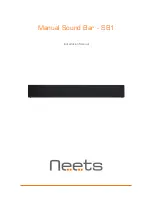
12
TRIANGLE -
The Triangle waveform is similar to the classic waveform’s ability to make smooth and uniform
weld results . One key advantage of the triangle waveform is the ability to set the peak and the length
independently . Meaning, a weld could have a very high peak and a very short time, or a very low peak with
a very long time, or any other combination of these two parameters . A Triangle waveform’s weld power
will always go to zero . In comparison, adjusting the weld time in Classic Waveform to be shorter does not
guarantee that the weld energy discharges to zero . Instead, the energy is simply cut off and not allowed to
fully discharge .
SQUARE -
Similar to the triangle waveform, a square waveform allows users to adjust the peak and the
length independently . Again, the user can select Square waveform so that a weld could have a very high
peak and a very short time, or a very low peak with a very long time, or any other combination of these two
parameters . The difference of this waveform compared to Classic and Triangle is the abruptness of power
at the start and end of each weld . The square waveform closely mimics the weld output of a typical laser
welder .
IGNITION
The ignition options control the electrode tips position at the moment the energy is released .
STANDARD -
In the Standard ignition option, the energy discharge occurs at approximately the same time
as the tip lifts off the work-piece surface . Since the electrode is close to the work-piece when the weld
is formed, it’s easier to get a weld on any surface or angle . This mode provides the most accuracy, but
requires the operator to hold the work-piece steadily below the electrode . This mode is perfect for metal
types that do not require a pre-heat phase during the weld . Because the electrode is closer to the work-
piece, the electrode may dull more quickly .
S -
In S, the energy discharge happens well after the electrode tip lifts off the work-
piece surface . While similar to the Standard option, S includes a “pre-heat” function before the
main weld . During this time, a very low amount of energy flows through the electrode and work-piece . This
preheating of the tungsten electrode helps create a more efficient weld area in preparation to the main
weld . The S ignition helps provide better weld consistency by allowing more variation
in contact pressure before the weld takes place .













































